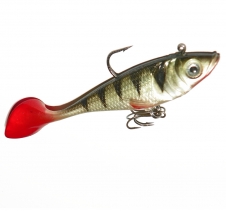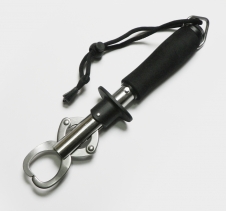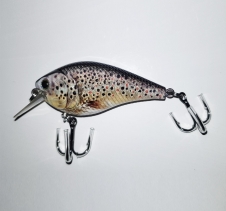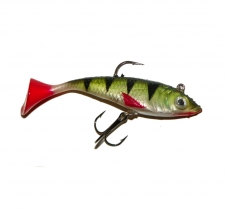Visit Our Online Store! $7 AusPost Parcel Post Delivery FREE Postage for orders $45 and over!
* Shipping rates above apply to Australian Customers only
Understanding Redfin, Master of retrieves.
The most popular Redfin lure and burley techniques.
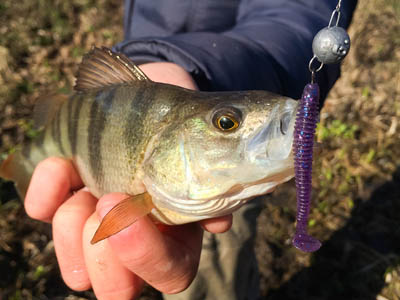 Redfin are the number one species found in Australia which are attracted to vibrations and disturbances in the water. Trout and Australian Bass may come out of their hiding places to check out a lure, but normally the lure must be recognised by them as a type of food source. Redfin in regular or under-fished waters however, will normally disregard this critical second step, attacking out at a lure likely out of curiosity.
Redfin are the number one species found in Australia which are attracted to vibrations and disturbances in the water. Trout and Australian Bass may come out of their hiding places to check out a lure, but normally the lure must be recognised by them as a type of food source. Redfin in regular or under-fished waters however, will normally disregard this critical second step, attacking out at a lure likely out of curiosity.Like all fish which have been caught previously, they will normally remember the events leading them to be hooked initially, and therefore associate the vibrations and disturbances in the water as a sign of danger, thereby protecting them from being caught again. In these cases, bait fishing is usually the only way to go for them, or a switch between spin lures and regular soft plastics can sometimes work too.
In waters where redfin are present, and the area is not fished often, spin lures or soft plastics can account for a huge number of fish in one session. While they are highly active during the day, night fishing for them is normally not very productive at all. Redfin almost always sleep at night, and when they sleep, it is usually a very deep sleep. They may be woken by a spin lure flying past them, but rarely will they attack in the dark. Most times they will simply move to another spot to avoid the annoyance of a lure during their sleep time. Fishing during the day is critical for catching decent amounts of redfin perch, or even for giving yourself a chance of landing one.
Red coloured lures have been used and recommended by fishermen since at least the 1950's as a better way to trigger an attack from redfin. While this may be somewhat true and many red featured lures are on the market for this reason, many have definitely been caught on almost every colour lure imaginable. Should you come across a fussy one, a red colour may sway their choice to attack, but this doesn't occur each and every time, and when redfin are in a rare feeding frenzy, the colour most definitely doesn't matter at all. They will attack almost any lure while they are in this state, even makeshift home-made lures.
Redfin also respond highly to smell and taste, therefore if they are having a lazy day, a decent dose of burley in the water will normally awaken them. At good times, the burley can even induce a feeding frenzy, but at the least it should awaken daydreaming redfin and get them thinking about food. A commonly used burley for stimulating redfin consists of a small amount of flour, liberal amount of breadcrumbs, mixed together with anise or strawberry essence and water.
This type of burley should be able to easily break apart and spread into a fine trail when added to the water, this can be tested by placing a small amount into a pot filled with water and brushing your hand through the water above the burley to see if a mist appears, if it doesn't easily mist you may want to consider adding more water to the initial burley mix, and adding more breadcrumbs can also help it to separate. To use the burley, throw a handfull in the area you are lure or bait fishing and the redfin will likely migrate towards it once the scent is picked up.
The best performing burley however, is chopped up earthworms, they can either be chopped up into small pieces while alive, or placed in a blender and the resulting liquid proteins mixed with water and breadcrumbs. Another way is also to place the live worms in a sifter, running water over them to remove the soil, then freezing the worms. Once you defrost them their bodies will fall apart, leaving only liquids and proteins which attract the fish to bite. You would need to be running a hobby style worm farm to make this economical though, as a pack of 12 to 20 worms normally sells for around $9 at bait shops.
In terms of lure fishing technique, retrieving your lure the same speed and depth over and over again will often produce no fish. Try bringing the lure in and then pausing, allowing the lure to sink, lower the tip of the rod and take up the slack again, then continue retrieving the lure while slowly moving the tip of the rod back up to a 45 degree angle. This will allow the lure to sink and then swim up the water towards the surface over and over again.
Should this not work, another method can be to similarly pause and drop the lure, once the lure has sunk down, tighten the line to collect the slack and flick the top of the rod up quickly, this is normally how a fish in distress would react to seeing a predator, and varying your retrieve speed after this event can lead you to find a technique which is perfect to catch many fish. The lure can be sunk up to a dozen times between each cast, even after the lure travelling only a meter or so in the water. Doing the same basic cast and retrieve over and over again very rarely works unless redfin are in one of their rare feeding frenzies.
Another good addition to your retrieves can be to move the top of the rod from left to right, this causes the lure to zig zag in the water creating more attention, again the speed can be varied while using this technique to perfect the movement and attraction to the target species.
Sometimes redfin will be noticed following lures but not striking, in these instances the lure retrieve can be stopped, allowing the lure to drop to the river bed, should the redfin pause and watch the position where the lure has fallen, a sudden fast movement of the lure can imitate a distressed fish trying to escape, and it is highly likely the redfin will attack in this situation.
When fishing in water with a decent current, the master technique in these situations is to cast into the current toward the far side from your current position, a light weight lure is required for this. The line is then secured and the current will take up the remaining slack, by carefully positioning the top of the rod the lure can be prevented from hitting the bottom or side and causing a snag. The line is then returned slowly, allowing a rise and fall motion dictated by your rod tip position against the current, the closer you can get to the banks of the river the better, as redfin prefer to sit in ambush within the slower moving waters on the sides.
All these techniques will work on occasion, but rarely all at once, therefore learning many different ways to retrieve your redfin lures will produce the most fish for your outing, along with greatly increasing your fishing skills for the future.
For more information, Click Here to view our article "Redfin Basics, catching the popular perch".
Follow us on twitter: @FishTackleLures or Google Plus: +FishingTackleLuresAU
View more articles in our Australian Fishing Guide.
Enter your email address below to be updated on new fishing articles, fishing lures and special offers:
We will only email once every two to four weeks at the most, usually every 2 months.
POPULAR PRODUCTS IN OUR ONLINE STORE


